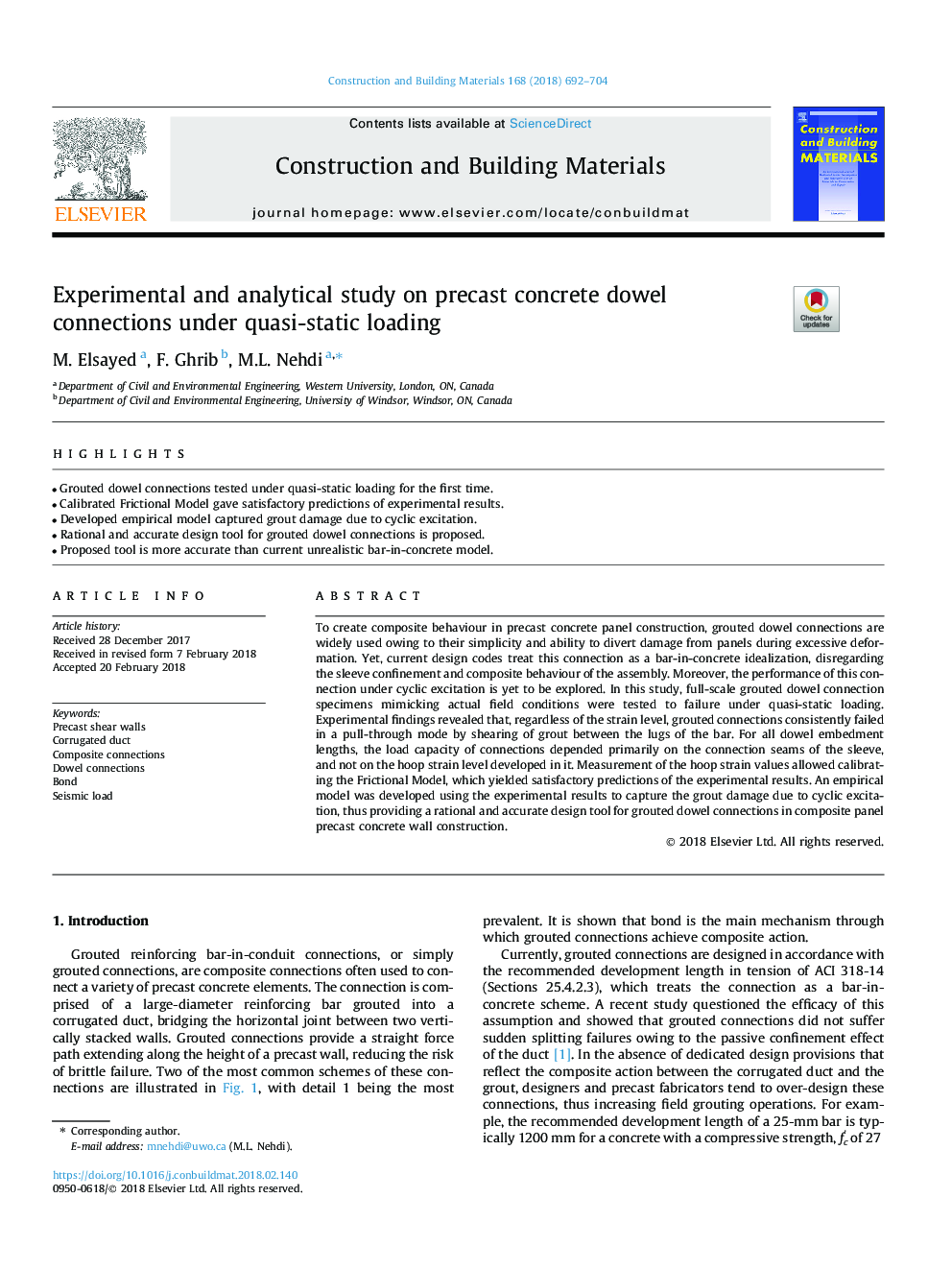| Article ID | Journal | Published Year | Pages | File Type |
|---|---|---|---|---|
| 6714975 | Construction and Building Materials | 2018 | 13 Pages |
Abstract
To create composite behaviour in precast concrete panel construction, grouted dowel connections are widely used owing to their simplicity and ability to divert damage from panels during excessive deformation. Yet, current design codes treat this connection as a bar-in-concrete idealization, disregarding the sleeve confinement and composite behaviour of the assembly. Moreover, the performance of this connection under cyclic excitation is yet to be explored. In this study, full-scale grouted dowel connection specimens mimicking actual field conditions were tested to failure under quasi-static loading. Experimental findings revealed that, regardless of the strain level, grouted connections consistently failed in a pull-through mode by shearing of grout between the lugs of the bar. For all dowel embedment lengths, the load capacity of connections depended primarily on the connection seams of the sleeve, and not on the hoop strain level developed in it. Measurement of the hoop strain values allowed calibrating the Frictional Model, which yielded satisfactory predictions of the experimental results. An empirical model was developed using the experimental results to capture the grout damage due to cyclic excitation, thus providing a rational and accurate design tool for grouted dowel connections in composite panel precast concrete wall construction.
Related Topics
Physical Sciences and Engineering
Engineering
Civil and Structural Engineering
Authors
M. Elsayed, F. Ghrib, M.L. Nehdi,
